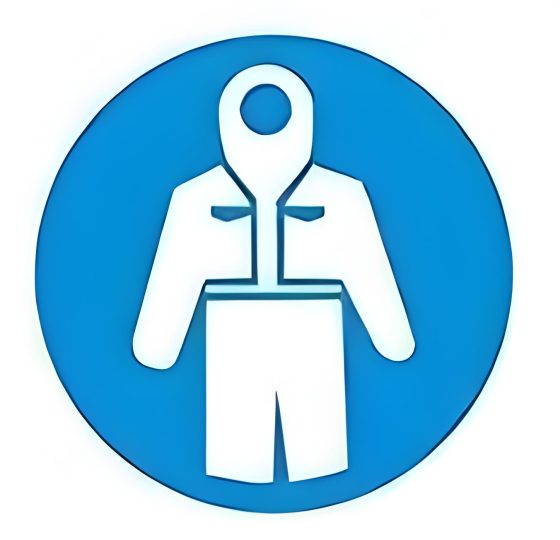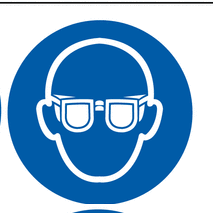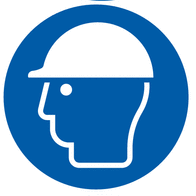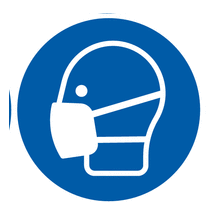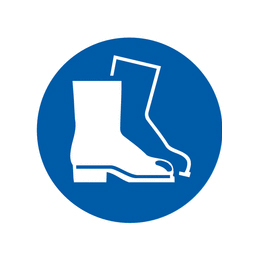EN Standard for Hearing Protection
El EN 352 estándar is a European norm for hearing protection equipment, setting requirements for earplugs, earmuffs, and other devices to protect users from excessive noise in the workplace and other environments. It is a family of standards covering different types of hearing protection, including following specific:
- EN 352-1 Hearing protectors – General requirements – Part 1: Earmuffs
- EN 352-2 Hearing protectors – General requirements – Part 2: Earplugs
- EN 352-3 Hearing protectors – General requirements – Part 3: Earmuffs attached to head protection and/or face protection devices
The standard ensures that devices are tested and certified to provide a measurable level of noise reduction, indicated by metrics like the Single Number Rating (SNR), to protect against noise-induced hearing loss.
EN 352-1:2002 – Hearing protectors – Ear muffs
Ear muffs tested in accordance with EN 352-1:2002 must be labelled with the standard number, manufacturer and model identification. Where required, there should also be indication for the orientation of the ear muff e.g. ‘TOP’ and/or ‘LEFT’ and ‘RIGHT’.
Materials and construction
Any materials used to make the product that will come into contact with the skin must be non-staining and not likely to cause skin irritation, allergic reaction or other adverse effects on health. The device must be free from sharp edges to be considered safe for use, and cleaning and disinfection methods specified should not cause damage or impairment to the hearing protection.
Size and adjustability
This is tested to ensure that ear defenders are suitable for the range of head sizes designated by the manufacturer. With EN 352-1:2002 compliant products you should expect an adequate fit.
Cup rotation
Hearing protectors are measured to assess whether or not the rotation of the cups is sufficient. There must be enough rotation for wearers to adjust the device to achieve the best fit.
Headband force
There should be no excessive force on the wearer’s head.
Cushion pressure
There should be no excessive pressure on the wearer’s head.
Resistance to damage when dropped
For this test, the ear protection product is dropped from a specified height onto a solid steel plate. If part of the product cracks or breaks then it will fail the test.
Change in headband force
After the tests above have been completed, headbands are subjected to flexing for 1000 cycles, before being conditioned in a water bath at 50°C for 24 horas. Once complete the headband force is measured a second time. A maximum deviation between the 2 measurements determines whether it passes.
Resistance to leakage
This is specifically for ear muffs with fluid-filled cushions. A vertical load of 28±1 Newtons is applied to the cushion for 15 minutes and any leakage caused will constitute a test failure.
Ignitability
A steel rod heated to around 650°C is applied to the hearing protection device. If any part ignites or continues to glow after the removal of the rod then the device will fail the ignition test.
Minimum attenuation
The minimum attenuation value must be recorded for EN 352-1 compliant ear muffs. This is the lowest sound pressure level perceivable by the ear of 16 human test subjects with and without the hearing protection worn. It is then possible to calculate the performance of the model from these values.
EN 352-2:2002 – Hearing protectors – Ear plugs
The second section of the EN352 standards, EN 352-2:2002, specifies the constructional, design, performance and marking requirements for EN 352 compliant ear plugs. This includes specification for the sound attenuation of the ear plugs, measured in accordance with EN 24869-1.
Ergonomic aspects of the ear plugs are addressed by taking into account the interaction between the wearer, device and, where possible, the working environment in which the device is likely to be used.
The markings for EN 352-2 may only appear on the packaging; these include the standard number, manufacturer and model identification. In addition to these markings the packaging for EN 352-2 ear plugs should also state whether they are disposable or reusable, have fitting instructions, include the nominal size of formable plugs (ranging from 5-14mm), and custom moulded ear plugs should have LEFT/RIGHT differentiation.
Ear plugs are tested for many of the properties outlined above in EN 352-1:
–Sizing and adjustability
–Materials and construction
–Resistance to damage when dropped
–Ignitability
–Minimum attenuation
There are, however, some small differences to testing methods in EN 352-2. Custom moulded ear plugs are not tested for sizing and adjustability, and with reusable ear plugs, the method of cleaning and disinfection specified is assessed to ensure it causes no significant alteration to the acoustic performance or to the material and construction properties.
352-3:2002 – Hearing protectors – Ear muffs attached to a safety helmet
The third section deals with the specific requirements for ear muffs attached to industrial safety helmets. En EN 352-3 products are tested for all properties mentioned in the EN 352-1 section, as well as specific testing methods for helmet mounted ear defenders.
The markings to be included on EN 352-3 ear muffs are the standard number, manufacturer and model identification, as well as indication of orientation where required e.g. ‘TOP’ and/or ‘LEFT’ and ‘RIGHT’.
EN 352 Parts 4 to 8
From part 4 onwards, the EN352 series deals with the safety requirements and testing methods for additional functions built into hearing protectors. An example of this is a ‘level dependent’ function, covered in EN 352-7. Level dependent ear plugs are designed to provide restoration of external sounds, while also providing attenuation of sound at high sound pressure levels. Other additional functions include active noise reduction and audio communications.
You can see the full list of additional hearing protection functions covered by EN 352 below:
EN 352-4:2001 – Hearing protectors – Level dependent ear muffs (Amended 2006)
EN 352-5:2002 – Hearing protectors – Active noise reduction ear muffs (Amended 2006)
EN 352-6:2002 – Hearing protectors – Ear muffs with electrical audio input
EN 352-7:2002 – Hearing protectors – Level dependent ear plugs
EN 352-8:2008 – Hearing protectors – Entertainment audio ear muffs
 Shanghai Zimai Protection Technology Co., Ltd.
Shanghai Zimai Protection Technology Co., Ltd.

